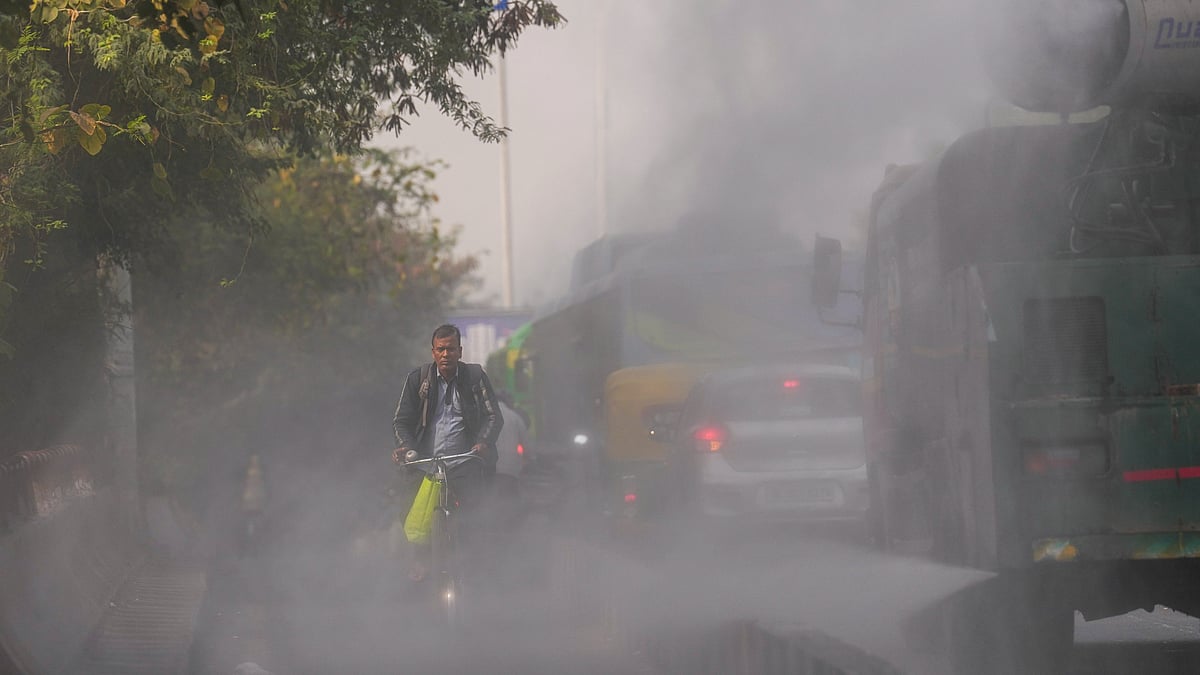Environment
Delhi worst in PM2.5 pollution, 447 Indian districts fail air quality test
Delhi far ahead of other states — but much of India remains polluted, as per Centre for Research on Energy and Clean Air

Delhi has once again emerged as India’s most polluted region, topping a new satellite-based assessment of air quality across 33 states and Union territories.
According to the analysis by the Centre for Research on Energy and Clean Air (CREA), the National Capital Territory recorded an annual mean PM2.5 concentration of 101 micrograms per cubic metre (µg/m³) between March 2024 and February 2025 — 2.5 times India’s own national standard and 20 times higher than the World Health Organisation’s recommended limit.
What exactly is PM2.5 — and why it matters
PM2.5 refers to particulate matter with a diameter of 2.5 micrometres or smaller — about 30 times thinner than a human hair. Because these particles are so tiny, they:
Penetrate deep into the lungs
Enter the bloodstream
Affect multiple organs
PM2.5 is considered the most dangerous category of air pollutants, linked to heart disease, stroke, chronic respiratory illnesses, reduced lung development in children, and premature mortality. Major sources include vehicle exhaust, coal-fired power plants, industry, open burning, dust, and winter-time temperature inversions that trap pollutants near the ground.
Published: undefined
The WHO’s safe annual guideline for PM2.5 is 5 µg/m³. India’s National Ambient Air Quality Standard (NAAQS) allows a much higher limit of 40 µg/m³, recognising the country’s unique pollution challenges — yet most districts still breached even this relaxed standard.
Delhi far ahead of other states — but much of India remains polluted. After Delhi, the satellite analysis ranked:
Chandigarh: 70 µg/m³
Haryana: 63 µg/m³
Tripura: 62 µg/m³
Assam: 60 µg/m³
Bihar: 59 µg/m³
West Bengal: 57 µg/m³
Punjab: 56 µg/m³
Meghalaya: 53 µg/m³
Nagaland: 52 µg/m³
All of these far exceed the national limit of 40 µg/m³. Overall, 447 of 749 districts (60 per cent) breached the NAAQS threshold. Pollution was not evenly distributed: the most affected districts were concentrated in a handful of states.
Delhi and Assam each had 11 districts in the top 50 most polluted list, accounting for nearly half of the national total. Bihar and Haryana contributed seven each, followed by Uttar Pradesh (4), Tripura (3), Rajasthan (2) and West Bengal (2).
Some regions showed uniformly poor air quality, with every monitored district exceeding national standards. These included:
Delhi
Assam
Punjab
Haryana
Chandigarh
Himachal Pradesh
Meghalaya
Tripura
Jammu & Kashmir
Others had overwhelming majorities above the limit, such as:
Bihar (37 of 38 districts)
West Bengal (22 of 23)
Gujarat (32 of 33)
Nagaland (11 of 12)
Rajasthan (30 of 33)
Jharkhand (21 of 24)
Ladakh, the Andaman & Nicobar Islands and Lakshadweep were excluded due to inadequate monitoring data.
Published: undefined
India’s poor air quality is not a new phenomenon — but global rankings reveal just how severe the situation is:
In the 2023 global air quality report by IQAir, 39 of the world’s 50 most polluted cities were in India
The top four most polluted cities globally were all Indian: Delhi, Begusarai, Guwahati, and New Delhi (city district)
India is routinely listed among the top three most polluted countries in the world, alongside Pakistan and Bangladesh
In the latest assessments, Delhi has repeatedly been ranked the world’s most polluted capital
These global lists are typically based on ground monitoring data, whereas the new CREA assessment relies on satellite measurements — yet the overall picture is consistent: India remains the epicentre of global PM2.5 pollution.
The report’s findings confirm a structural, nationwide air quality crisis, not confined to the Indo-Gangetic plains or winter smog events. The widespread breach of safety limits highlights the need for:
Coordinated inter-state action
Stronger enforcement of pollution norms
Rapid transition to clean energy
Improved monitoring networks, especially in remote regions
With India continuing to dominate global pollution rankings, the new satellite dataset adds further urgency to long-standing calls for comprehensive, year-round air quality management — backed by political will at both state and national levels.
Published: undefined